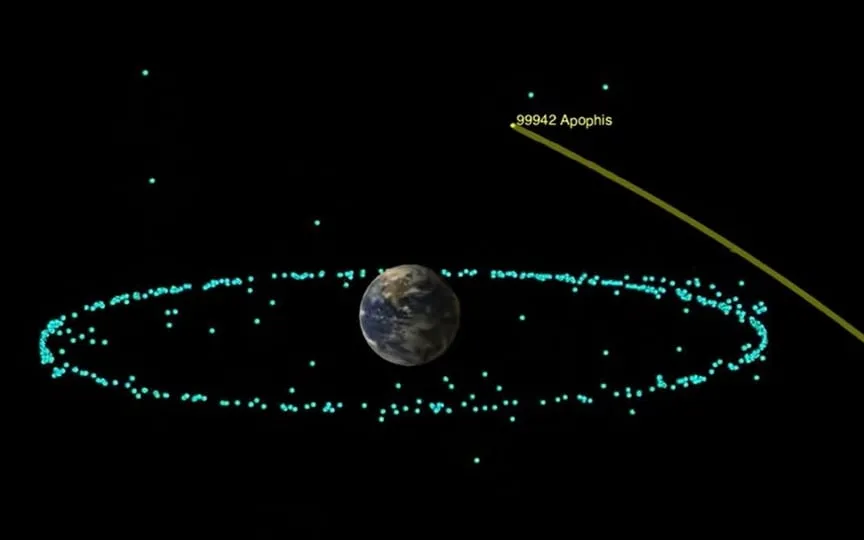NASA sends OSIRIS-REx to study Apophis, the ‘God of Chaos’ asteroid, following Bennu mission
Using its advanced telescopes, both on the ground and in space, NASA has identified numerous asteroids, including one called Bennu, which poses a potential threat to life on Earth. With a 1/2700 chance of impacting our planet between 2175 and 2195, NASA decided to investigate further by sending a spacecraft to land on Bennu and collect samples of dust and rock. These samples have recently been brought back to Earth. Now, NASA has redirected the OSIRIS-REx spacecraft to study another asteroid that also poses a potential danger to Earth. This particular asteroid, named Apophis, is expected to come very close to our planet within the next ten years. Learn more about NASA’s mission, known as the God of Chaos, to study Apophis.
NASA God of Chaos mission
After depositing samples collected from asteroid Bennu back to Earth, NASA has re-used the Origins, Spectral Interpretation, Resource Identification and Security-Regolith Explorer (OSIRIS-REx) spacecraft to study the close approach of asteroid Apophis in 2029. Although it will not collect a sample of this of the asteroid, the OSIRIS-REx spacecraft drops 16 feet from the asteroid’s surface and fires its thrusters downward.
According to NASA, this procedure will lift surface rocks and dust so that scientists can peer into the material below.
Dani Mendoza DellaGiustina, principal investigator of OSIRIS-APEX, said: “The close approach is a great natural experiment. We know that tidal forces and accretion of rocky material are fundamental processes that can affect planet formation. They could tell us how we got from early solar system debris to full-fledged planets.”
What is the asteroid Apophis?
This asteroid is named 99942 Apophis and has been named Asteroid 2004 MN4 by NASA’s Center for Near-Earth Object Research. It is also called the “God of Chaos” asteroid. The asteroid is named after Apophis, the demon serpent who personified evil and chaos in ancient Egyptian mythology.
According to NASA, asteroid 99942 Apophis asteroid will make a very close pass to Earth on April 13, 2029. On that day, this space rock will come as close as 38,000 kilometers from Earth’s surface. This is closer than many geostationary satellites orbiting the planet. Amazingly, it is visible to observers in the Eastern Hemisphere without the aid of a telescope or binoculars! It travels at a speed of about 26,712 kilometers per hour, which is almost as fast as an Intercontinental Ballistic Missile (ICBM).
Scientists ruled out a possible asteroid impact in 2029, although collisions in 2036 and 2068 remained a concern. The asteroid’s 2021 trip to Earth proved beneficial for scientists, who used powerful radar observations to extensively study the asteroid’s orbit and trajectory.
Davide Farnocchia of NASA’s Near-Earth Object Research Center says that “a 2068 impact is no longer possible, and our calculations show no impact risk for at least the next 100 years.” Therefore, it has been declared that asteroid 99942 Apophis is not expected to hit the Earth’s surface for at least a century.




